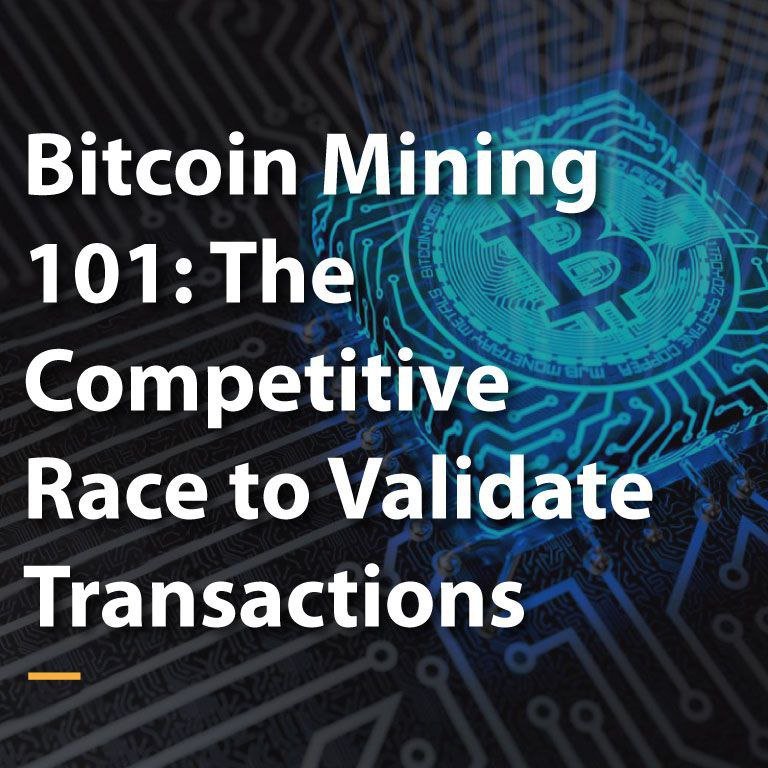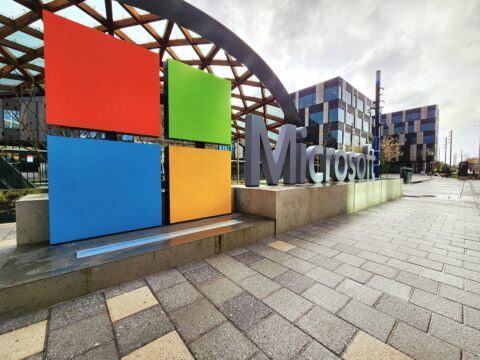Contents
Bitcoin mining is the process of creating new bitcoins by solving complex math problems that verify bitcoin transactions. When bitcoin first launched in 2009, miners received 50 bitcoins for each block they verified.
In the early days, mining was done by individuals on home computers. However, as the difficulty of mining bitcoin increased, specialized bitcoin mining hardware was developed to handle the computations needed for mining. Today, most bitcoin mining is done by large mining operations and mining pools using dedicated data centers full of specialized ASIC hardware designed specifically for mining bitcoin.
Key Highlights:
- Mining is crucial for Bitcoin, managing transactions and generating new bitcoins, occurring roughly every 10 minutes.
- Miners validate transactions, ensuring the network’s integrity, and are rewarded with new bitcoins for successful block verification.
- The total number of bitcoins that can ever exist is capped at 21 million by the Bitcoin protocol.
- Over 19 million bitcoins have been mined by 2022, leaving less than 2 million bitcoins yet to be mined.
How Bitcoin Mining Works?
Bitcoin mining is the process by which new bitcoins are entered into circulation, but it serves a vital purpose in maintaining the integrity of Bitcoin’s blockchain.
The blockchain is a decentralized, distributed public ledger that records every Bitcoin transaction. It is constantly growing as new blocks are added to it with a new set of recordings. In order to add new transaction records to the blockchain, miners must solve a complex mathematical puzzle that requires computing power. This process is known as proof-of-work.
Solving the proof-of-work mathematical puzzle serves two main purposes:
- It verifies the legitimacy of the latest block of transaction records. By solving the puzzle, miners prove the work was done and the block is verified.
- It prevents double spending. Without miners verifying transactions, people could spend their bitcoins twice. Mining prevents this by confirming the validity of each transaction in a block.
When a miner successfully solves the mathematical problem for a block, two things happen:
- The transactions are verified and added to the public blockchain. This confirms that the transactions are legitimate.
- The miner is rewarded with newly minted bitcoins. This provides an incentive for miners to spend their computational resources and power to secure the network.
This mining process secures Bitcoin’s blockchain network. Miners essentially use their computing power to maintain the integrity of transactions and the public ledger.
Bitcoin Mining Hardware
Mining Bitcoin requires specialized hardware that has been specifically designed for the task. Bitcoin mining hardware has evolved dramatically since the early days of the network. Here are the main types of hardware that have been used for Bitcoin mining:
1. GPU Mining
In the early days of Bitcoin, mining was done using the GPUs (graphics processing units) in regular desktop computers. GPUs were able to mine Bitcoin far more efficiently than CPUs. Bitcoin mining software was written to utilize the immense parallelization power of GPUs which greatly accelerated mining capabilities.
However, GPU mining became quickly outdated with the introduction of ASIC miners. While much more accessible, GPU mining was far less efficient and more power hungry per unit of hash power than ASICs.
2. FPGA Mining
Field Programmable Gate Arrays (FPGAs) were the next step up from GPU mining. FPGAs are integrated circuits that can be programmed and reprogrammed to perform specific tasks.
FPGA mining provided improved efficiency and hash rates compared to GPU mining. However, they were soon surpassed by the emergence of ASIC mining.
3. ASIC Mining
Application Specific Integrated Circuits (ASICs) are hardware chips designed specifically for mining Bitcoin. They far surpass the efficiency of any previous Bitcoin mining hardware.
ASIC miners are designed to perform the SHA-256 hashing algorithms needed for mining at maximum speeds and efficiency. They cannot be repurposed for other tasks.
The rapid rise of ASIC mining led to a major centralization of Bitcoin mining power and mining pools. However, newer generation ASICs have helped increase decentralization.
ASIC mining is now the only profitable way to mine Bitcoin. Using GPUs or FPGAs for mining is obsolete given the dominance and efficiency of ASIC miners. However, the high cost of the latest ASIC hardware makes mining out of reach for the average person unless joining a mining pool.
Mining Pools
Mining pools are groups of miners that work together to mine bitcoin and share the rewards. Rather than mining alone, miners contribute their hash power to the pool’s total hash power to increase their chances of validating a block and getting a payout.
The largest and most popular mining pools today include F2Pool, Poolin, and BTC.com. F2Pool currently has around 18% of the total bitcoin hashrate, making it the largest mining pool. Other major pools include AntPool, Slush Pool, ViaBTC, BTC.TOP, and Foundry USA.
There are pros and cons to solo mining versus joining a mining pool:
Pros of solo mining:
- You keep the full block reward and transaction fees if you validate a block
- No pool fees or sharing of rewards
- You have full control over block validation
Cons of solo mining:
- Extremely low probability of successfully mining a block
- It could takes years to validate a block and receive rewards
- You need a massive amount of hash power to have a reasonable chance
Pros of joining a mining pool:
- Much greater chance of earning frequent bitcoin rewards
- Rewards are shared amongst pool members based on contributed hash power
- Smooths out luck by sharing block rewards regularly
Cons of joining a mining pool:
- The pool operator takes a percentage of rewards as a fee
- You must split rewards with all pool members
- You don’t control exactly which blocks are validated
Overall, for most miners, joining a pool is the better option. By combining hash power, pools significantly increase the chance of successfully validating a block and earning bitcoin on a frequent basis. This provides a steady mining reward stream for participants, even if they are only contributing a small amount of hash power compared to the entire network.
Bitcoin Mining Difficulty
Bitcoin mining difficulty represents how hard it is to find a hash below the target required to solve a block. It is a measure of how many hashes (statistical calculations) must be performed in order to create a new block.
The Bitcoin network automatically adjusts the mining difficulty every 2,016 blocks (roughly every two weeks) based on how much hashing power has been employed by the network. If more computing power is employed in mining, then the difficulty will increase to make mining harder. If less computing power is employed, the difficulty will decrease to make mining easier.
The difficulty adjustment helps the network maintain an average block time of approximately 10 minutes. If blocks were being mined too quickly, the network would increase the difficulty to return block time back to the 10 minute target.
A higher mining difficulty means miners require more hashing power and electricity resources to mine new Bitcoins. This makes profitable mining more challenging for smaller miners unless they operate as part of a mining pool. However, a higher difficulty also means the Bitcoin network is more secure against threats.
Overall, mining difficulty aims to regulate the rate of block production and the security of the blockchain. It is a key component that allows Bitcoin to function as a decentralized network and achieve consensus on transaction history.
Bitcoin Mining Rewards and More
Bitcoin mining rewards are the main incentive for miners to contribute their hash power to the network. When Bitcoin first launched, mining rewards were set at 50 BTC per block. However, the Bitcoin code specifies that the mining reward is reduced by 50% every 210,000 blocks, or approximately every 4 years.
This event is known as the “Bitcoin halving“. So far there have been three halvings:
- In November 2012, mining rewards dropped from 50 BTC to 25 BTC per block
- In July 2016, mining rewards dropped from 25 BTC to 12.5 BTC per block
- In May 2020, mining rewards dropped from 12.5 BTC to 6.25 BTC per block
The next halving is expected to occur in 2024, when rewards will fall to 3.125 BTC per block.
The fixed supply of 21 million BTC is expected to be reached around the year 2140 when block rewards will drop below 1 satoshi (0.00000001 BTC). At that point, it is presumed miners will be incentivized by transaction fees rather than block rewards.
Currently, in addition to the 6.25 BTC block reward, miners may also receive transaction fees that users include with their transactions. These fees are optional but incentivize miners to prioritize confirming that transaction. As the block reward continues decreasing over time, transaction fees will play a greater role in miner compensation.
Mining Profitability
Since bitcoin mining is costly and only pays out newly generated bitcoins plus transaction fees, it can be difficult to turn a profit mining bitcoin. Whether or not bitcoin mining is profitable depends on many factors:
- Mining Hardware – Specialized ASIC mining hardware is expensive but more efficient and profitable than using GPUs or older ASIC models. Newer more efficient ASIC models can earn more per watt than energy costs. Using obsolete hardware is likely unprofitable.
- Electricity Costs – The energy costs involved in mining bitcoin from the required hardware can outweigh earnings. Miners pay for huge amounts of electricity to power and cool mining rigs. Areas with cheap hydroelectric power sources tend to be popular mining locations.
- Network Difficulty – The bitcoin network’s mining difficulty adjusts every 2016 blocks based on total hashrate to maintain 10 minute block times. As more miners join the network, difficulty increases, reducing profitability. Periods with stable difficulty can lead to more consistent earnings.
To maximize profits, bitcoin miners need access to cheap electricity, the latest ASIC models, and low difficulty. Even then profit margins can be thin. As mining difficulty increases over time, less profitable miners are forced to shut down first. This leads to increased centralization among larger mining operations. Some miners have turned to mining pools to smooth out earnings.
Future of Bitcoin Mining
The future of Bitcoin mining is uncertain and depends largely on the value of Bitcoin. As the block reward for mining new blocks is halved roughly every 4 years, the revenue from mining Bitcoin will decrease over time unless the Bitcoin price rises sufficiently. So far, the price has increased enough to sustain mining profitability through several halving events.
The next Bitcoin halving is expected to occur in 2024, reducing the block reward from 6.25 BTC to 3.125 BTC. This could pressure less efficient miners to shut down unless Bitcoin’s price rises to cover their costs. Profit margins are already thin, so the halving events place significant uncertainty around the future economics of mining.
By design, only 21 million Bitcoins will ever exist. After the last Bitcoin is mined in approximately 2140, there will be no more block rewards and transaction fees will likely become the sole mining incentive. Some believe mining will remain profitable from fees even after 2140, while others say energy costs will become prohibitive as the block reward diminishes. This creates uncertainty around the long-term mining trajectory.
Overall, Bitcoin mining is projected to become less decentralized and concentrated in large mining firms as revenues decrease over time. Individual miners will likely shut down first, leaving specialized firms with access to cheaper electricity to compete for what remains. The future of mining will depend on advancing technology, electricity costs, Bitcoin demand, and how successfully the protocol upgrades to sustain itself in the very long run.
Sustainability Concerns
Bitcoin mining has raised concerns regarding its massive energy consumption and carbon footprint. According to the Cambridge Bitcoin Electricity Consumption Index, mining Bitcoin currently consumes around 200 terawatt-hours per year. That’s more than many entire countries consume annually.
The process of mining Bitcoin requires specialized computers solving complex computational math problems. As the mining difficulty increases, more computational power is needed, requiring more energy. Much of this energy comes from fossil fuels, releasing greenhouse gasses.
There are efforts within the Bitcoin community to make mining more sustainable through renewable energy sources. Some miners locate near solar, wind, hydropower or geothermal sources. Other initiatives incentivize miners to reduce emissions by purchasing carbon offsets. However, renewable sources currently provide only a fraction of mining energy.
As Bitcoin adoption grows, its energy footprint is likely to increase. Whether Bitcoin mining can effectively transition to renewable energy sources remains an open debate. If not, the massive carbon emissions from mining could limit Bitcoin’s potential as a sustainable cryptocurrency. More energy-efficient methods of confirming transactions may need to be developed.
Getting Started with Bitcoin Mining
Bitcoin mining seems complicated, but can be easy for beginners to get into with just a few basic steps:
- Get a Bitcoin wallet – This is necessary to receive mining rewards and transactions. Popular options are Coinbase, Exodus, Mycelium, etc.
- Choose mining hardware – Specialized ASIC mining rigs are most efficient. Options include Antminer and WhatsMiner. GPU mining is also possible with AMD or Nvidia cards.
- Calculate mining profitability – Factor in hardware, electricity costs, mining difficulty, and Bitcoin price to see potential profits. Use a calculator like CryptoCompare.
- Select a mining pool – Joining a pool shares rewards amongst multiple miners. Popular pools are Slush Pool, AntPool, F2Pool.
- Configure mining software – Depends on hardware, but examples are CGMiner, BFGMiner, EasyMiner. Enter pool info, hardware details, etc.
- Start mining! – Simply run the mining software and earn rewards based on contributed hashpower. Monitor for stability.
- Get a mining wallet – To receive daily mining payouts. Options are Coinbase, Blockchain.info, Bitcoin Core.
The basic steps above allow even beginners to start Bitcoin mining. It can take some initial research, but the process is straightforward. With the right hardware, software, and pool, anyone can become a Bitcoin miner.








